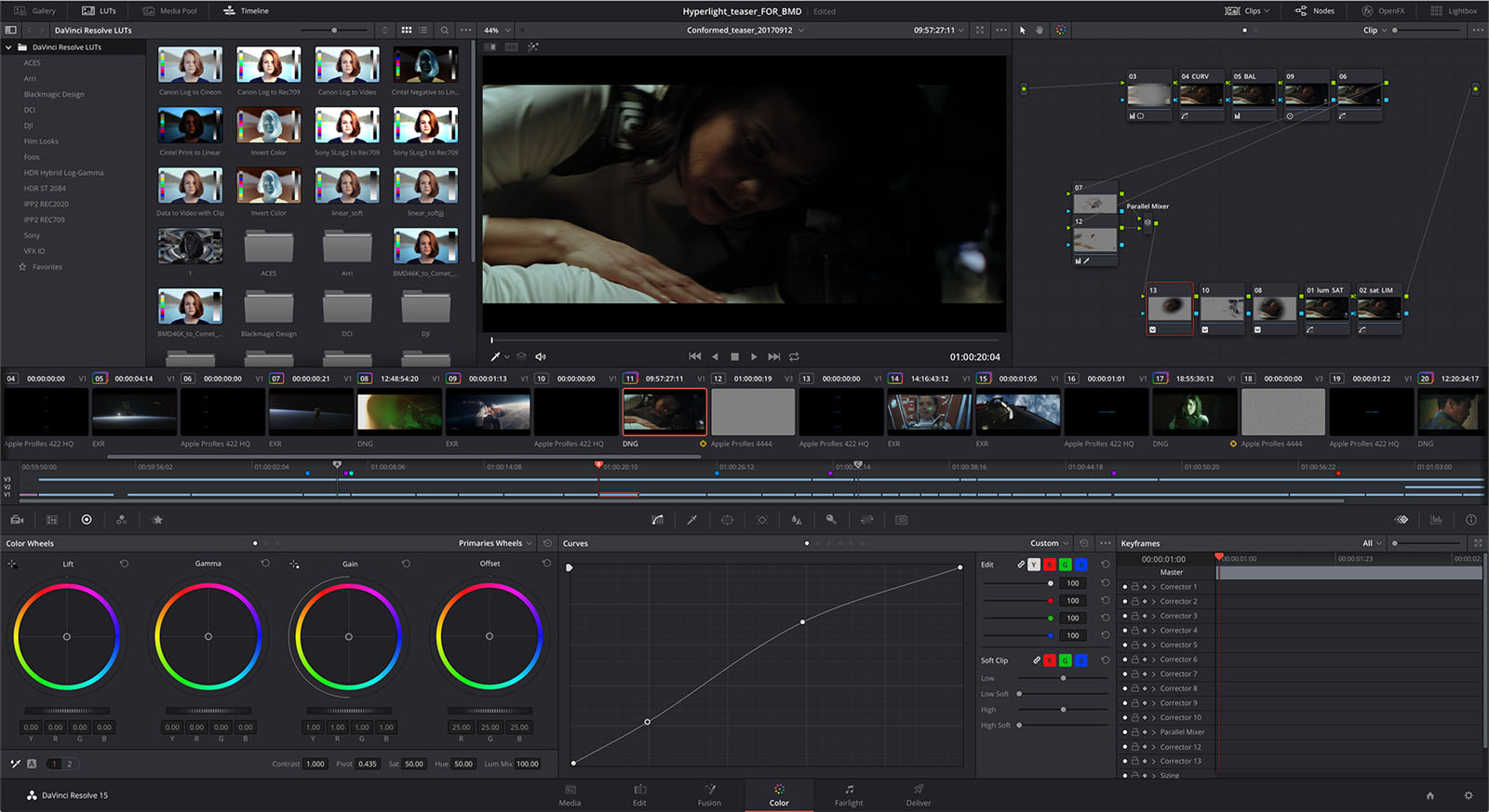Blackmagic's new $1295 compact shoots 4K RAW movies
The Pocket Cinema Camera 4K (let’s call it the BMPCC 4K) sports an all-new body that’s lot more modern than the original. It’s built using carbon-fiber, rather than metal, which makes it lighter, Blackmagic Design said. It’s also got a bigger grip and a larger array of physical dials and buttons for recording, ISO, shutter, aperture, white balance and other features. Most of those things were controlled from the rear display before, so the new model should handle much better.
The original BMPCC had a Micro Four Thirds mount but used a reduced-size sensor. Luckily, the BMPCC 4K has a full-sized Micro Four Thirds sensor with native DCI 4K (4,096 x 2,160) resolution and 13 stops of dynamic range. Much like with Panasonic’s GH5s, it uses the full sensor width to maximize the field of view, and dual native ISO with a top ISO setting of 25,600 for better low-light performance. There’s no sign of autofocus or in-body stabilization, but those aren’t deal-breakers for the BMPCC 4K’s filmmaker market.
![ProEXR File Description=Attributes=cameraAperture (float): 36cameraFNumber (float): 8cameraFarClip (float): 1e+30cameraFarRange (float): 1e+18cameraFocalLength (float): 40cameraFov (float): 13.6855cameraNearClip (float): 0cameraNearRange (float): 0cameraProjection (int): 0cameraTargetDistance (float): 2.21183cameraTransform (m44f): [{-1, 7.64274e-15, 8.74228e-08, 1.46387e-33}, {-8.74228e-08, -8.74228e-08, -1, 0.0607741}, {0, -1, 8.74228e-08, -1.10716}, {0, 0, 0, 1}]channels (chlist)compression (compression): ZipdataWindow (box2i): [0, 0, 5999, 2999]displayWindow (box2i): [0, 0, 5999, 2999]lineOrder (lineOrder): Increasing Yname (string):](https://s.aolcdn.com/hss/storage/midas/efab2443bc062a6b9d83d46f2e6ef7de/206280643/Pocket+Cinema+Camera+4k+-+3QTR-2.jpg)
Video can be recorded onto standard SD, UHS-II or CFast 2.0 cards in both ProRes and RAW, at up to 4K 60 fps or cropped 1080P at 120 fps. The BMPCC also offers a new technical twist: You can record 4K video directly to a media drive via the USB-C Expansion Port. “That means customers can turn projects around much more quickly because they don’t have to transfer files,” said Blackmagic. “All they need to do is unplug the USB-C drive and then connect it to their computer to start editing.”
The BMPCC has a 5-inch touchscreen that’s hopefully a lot brighter than the notoriously dim one on the original. That can be used to frame shots and check focus, or adjust menu settings and add metadata. Other usability features include histograms, focus and peaking indicators and 3D LUTs. HDR can be directly recorded using an extended video mode, reducing much of the normal time-consuming post-production.
You can record audio from a 3.5mm jack or professional mini-XLR inputs with phantom power and, yes, there is a headphone jack. Battery life was a weak point on the first BMPCC, but the new model uses LP-E6 batteries that can be charged via the USB-C port or a locking DC power connector.
DaVinci Resolve 15

Blackmagic also launched DaVinci Resolve 15, a “massive update” to its popular visual effects, motion graphics and editing package. The Fusion compositing VFX package is now integrated into Resolve 15, offering “a true 3D workspace with over 250 tools for compositing, vector paint, particles, keying, rotoscoping, text animation, tracking stabilization and more,” said Blackmagic. It includes support for Apple Metal, and recognizes multiple GPUs and CUDA for improved speed.
For colorists, DaVinci Resolve 15 gets expanded HDR support with improvements for encoding Dolby Vision HDR and Samsung/Amazon’s HDR10+. Editors, meanwhile, get “dramatically improved load times” and features like stacked timelines and timeline tabs, improved keyboard customization, image stabilization on the edit page, Netflix render presets and more. Finally, there’s an update to the Fairlight audio app with features like ADR, pitch correction, normalization and cross-platform plugin support.
DaVinci Resolve 15 is now available in a public beta, free to current DaVinci Resolve and DaVinci Resolve Studio customers. If you’re not one of those folks, you can get DaVinci Resolve Studio for $299. Blackmagic also unveiled a pair of consoles for the Fairlight audio app starting at $21,995.
Let’s block ads! (Why?)


